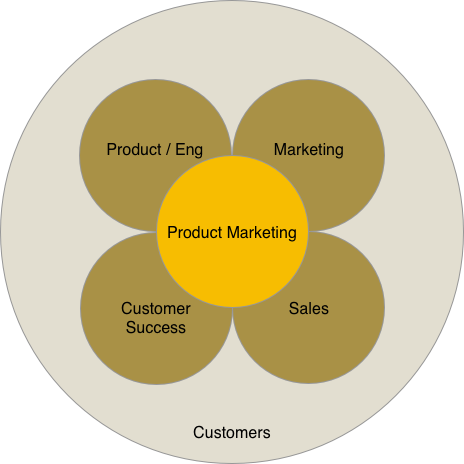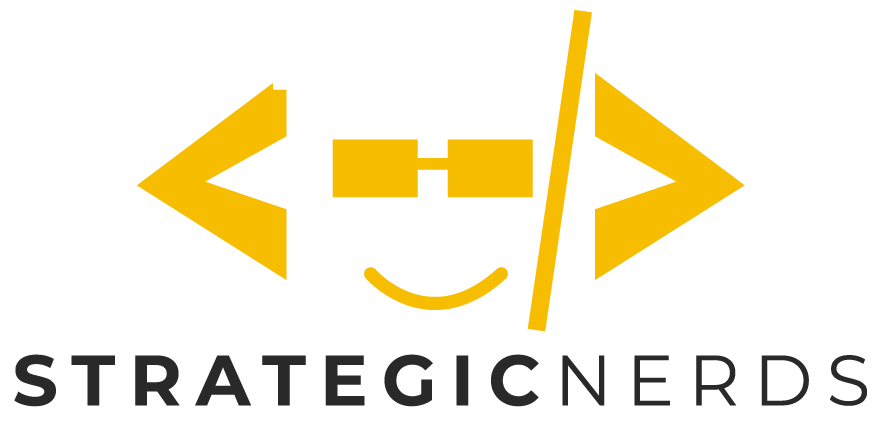What does Product Marketing do?
The ringleaders of the circus

Product Marketing sits at the nexus of nearly all disciplines in a company: Product/Engineering, Sales, Marketing, and Customer Success.

Effective Product Marketing Managers do the following, all at once:
- Work with Product/Engineering to identify all the market requirements for the product or feature. This will include determining who is the right customer target for a product or feature, leading customer discovery and research to learn everything possible about the target customer, identifying the key features and benefits necessary for the product or feature to meet the needs of the target customer, and determining the best positioning and messaging to describe how the product or feature meets the needs of the target customer.
- Work with Marketing to build a go-to-market plan, including necessary information for a Developer Growth team to identify the proper content, ads, and SEO strategy. The go-to-market plan will also help Developer Marketing identify the correct communities to carry the core messaging, the best events to drive awareness with the target customer, and the best website materials.
- Work with Sales to build all enablement collateral, including datasheets, first meeting decks, FAQs, competitive battle cards, etc.
- Work with Customer Success to mine case studies and other customer evidence to drive continued post-launch momentum, as well as funneling feedback to the product/engineering team as they plan follow-on releases.
If Developer Advocacy is the "spine" of my Developer Relations program, Developer Product Marketing is the "heart." Everything in the organization is orchestrated by Product Marketing. I like to call them "the ringleaders of the circus." In truth, they're the most knowledgeable in the company about the target customer and the ways in which the product or feature meets the needs of that customer.
I divide Product Marketing into three functional areas: pre-launch, launch, and post-launch. Each activity in these areas warrants a drill-down post, which I will write in time.
- Pre-launch activities. Drive market research, customer discovery, customer feedback, and content preparation that help identify product-market fit and ensure the product meets the needs of real customers.
- Customer target hypotheses
- Customer discovery and research (what problems do customers currently face, and how can we address them?)
- Customer personas
- Market sizing and opportunity
- Description of key features and benefits desired by the target customer
- Competitive analyses
- Positioning and messaging
- Customer journey map
- Collateral "bill of materials" (what we need to build for launch): website changes, landing pages, benchmarks, customer evidence, etc.
- Work closely with early adopters to write case studies, obtain quotes for use in website and sales materials, and provide references to influencers and journalists.
- Write the Getting Started Guide, a step-by-step guided tour of the product or feature, complete with screenshots, videos, and animations showing the product in all its glory.
- Launch activities. Build materials, pre-brief related teams, coordinate activities, and lead all aspects of the product launch.
- First thing first: Leverage the MRD!
- Build the digital marketing plan. Identify key communities, websites, and other online venues where the target customer is known to congregate. Build an outreach strategy for each.
- Identify the most common keywords the target customer will use when searching for a solution to their problem. Build a content plan (SEO) to answer each of these questions proactively.
- Use the keywords to build a paid acquisition strategy, if this is part of your marketing mix.
- Identify the most common real-world venues where the target customer congregates: events, meetups, etc. Start submitting CFPs to speak at these events and meetups, and begin research on event sponsorship, if this is part of your marketing mix.
- Build a Comms plan that outlines key influencers, journalists, and publications where information about your product or feature would be germane.
- Write the necessary collateral desired by your sales team: data sheets, first-meeting decks, battle cards, etc.
- Pre-brief the sales team on all aspects of the product, probably over multiple sessions: what is the ideal customer profile? What are our customer's most common questions, etc.
- Post-launch activities. Identify case studies, drive the Comms narrative, and inform growth activities that make a product successful in the market.
- Identify who the top customers are and check if they would be willing to write a case study or provide their logo for use in marketing materials.
- Look across customer usage and identify trends that could be used as pitches for Comms outreach to journalists and publications.
- Calculate usage numbers and other "vanity metrics" that could be used in website and sales materials.
- Adjust marketing website and sales materials based on customer usage and continued customer discovery.
As described above, all of the activities driven by Product Marketing get distilled into a handful of core artifacts that live on for the life of the product:
- The Market Requirements Document
- Getting Started Guide
- Go to Market Plan
- Sales Enablement Plan
- Case studies and evidence
Click through the links above to learn how to write each document effectively.
Step up, don't be afraid
As I wrote, Product Marketing is the heart of the marketing team. As I like to say, they're "the ringleaders of the circus." Indeed, because of its position at the nexus of nearly all functional areas in the company, Product Marketing is one of the most critical organizations in the company. Often, Product Marketing Managers have leadership responsibility with no organizational authority. Thus, Product Marketing Managers need to lead through influence. Don't be afraid to step up and lead.
